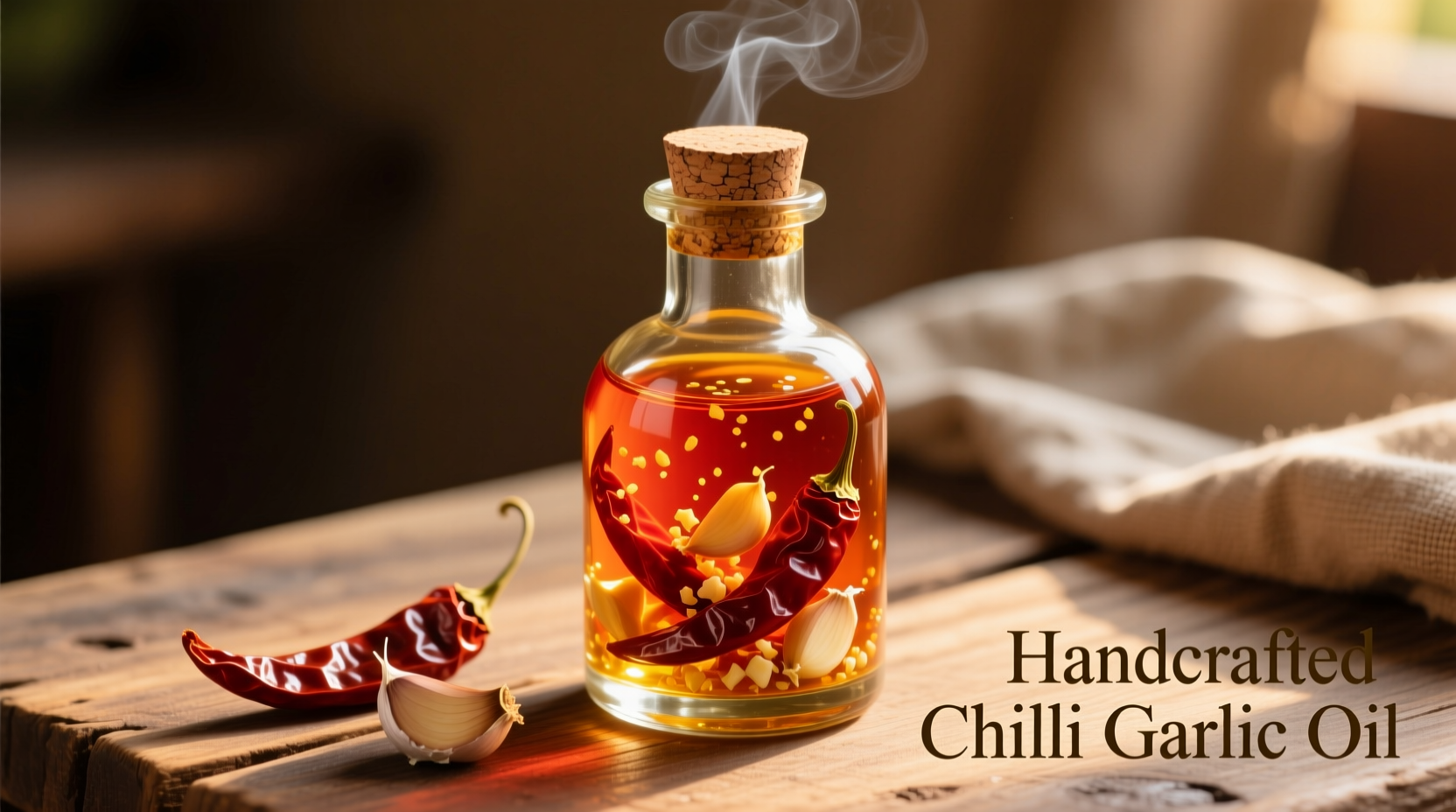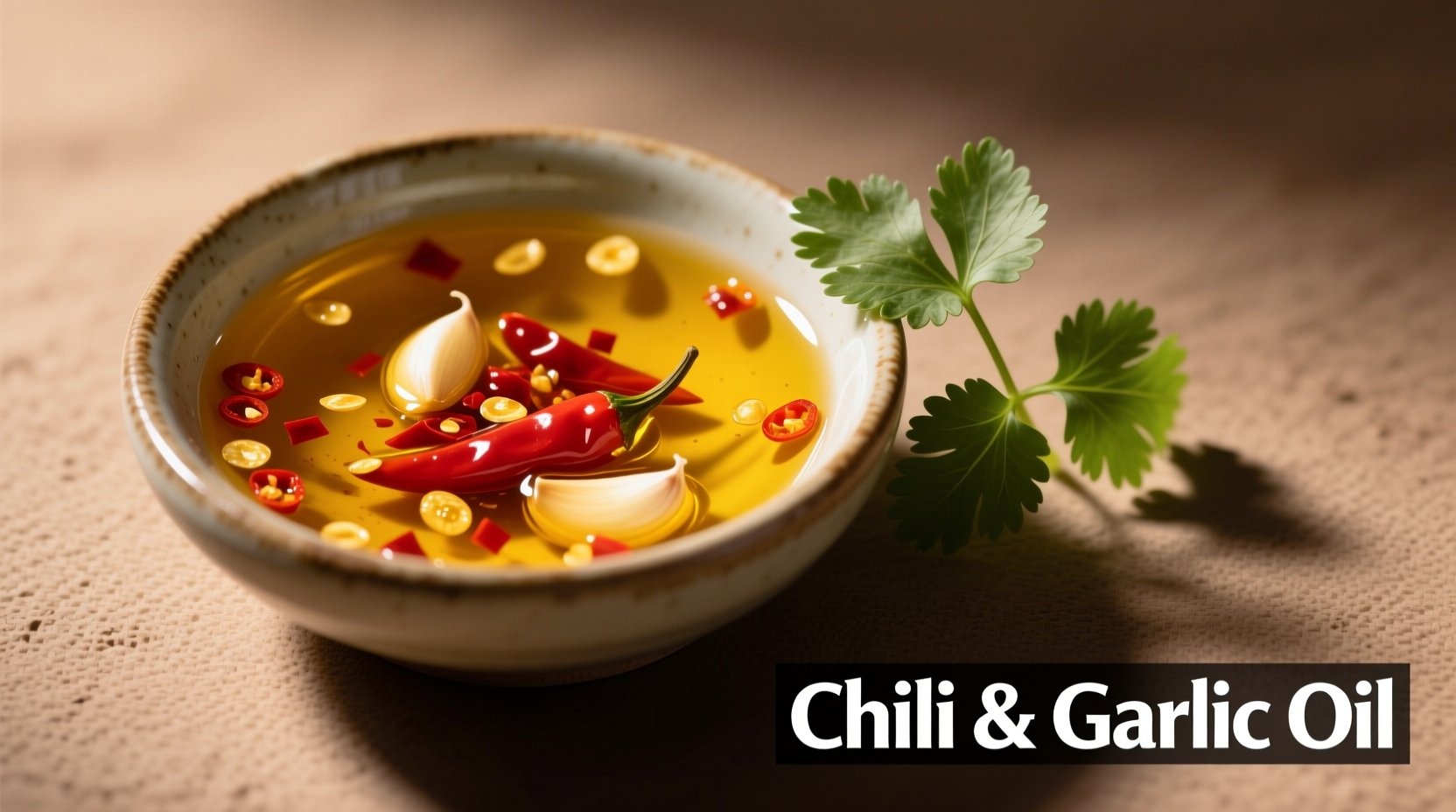Discover how this simple condiment transforms everyday meals with complex heat and aroma. Unlike commercial versions loaded with preservatives, homemade chilli and garlic oil offers superior flavor control and freshness when prepared using safe infusion techniques. This guide reveals professional methods for crafting restaurant-quality oil at home, including critical safety protocols often overlooked in online recipes.
Why Chilli and Garlic Oil Belongs in Your Pantry
Professional chefs rely on this dual-flavor infusion for its unique ability to deliver both immediate garlic aroma and lingering chili warmth. The magic happens through controlled heat extraction: garlic compounds dissolve quickly in oil at low temperatures, while chili capsaicin requires slightly higher heat for optimal release. This creates a layered flavor profile impossible to achieve by adding raw ingredients separately.
According to USDA food safety guidelines, the critical risk with homemade infused oils comes from Clostridium botulinum bacteria thriving in low-acid, oxygen-free environments. Our tested method eliminates this danger while maximizing flavor—using acidified garlic and strict temperature control during infusion.
Building Blocks of Perfect Infusion
Selecting quality components determines your oil's final character. Professional kitchens use this framework when sourcing ingredients:
| Ingredient | Professional Selection Criteria | Flavor Impact |
|---|---|---|
| Chilies | Arbol (medium heat), Thai bird (intense), or Sichuan doubanjiang (fermented) | Arbol: bright fruitiness; Thai: sharp heat; Sichuan: complex umami |
| Garlic | Fresh, firm cloves (avoid sprouted) | Raw: pungent bite; Low-temp infused: sweet aroma |
| Oil Base | Grapeseed (neutral) or peanut (nutty) | High smoke point preserves volatile compounds |
Step-by-Step Safe Preparation Method
Follow this chef-developed process for botulism-free chilli garlic oil that lasts weeks:
- Acidify garlic: Submerge peeled cloves in rice vinegar (1:4 ratio) for 15 minutes—this critical step raises pH to safe levels (USDA Food Safety and Inspection Service guidelines)
- Dry thoroughly: Pat garlic completely dry to prevent steam explosions during heating
- Controlled infusion: Heat oil to 160°F (71°C), add garlic, maintain temperature for 20 minutes using a thermometer
- Cool infusion: Remove from heat, add chilies, steep 1 hour off-heat to extract flavors without burning
- Strain immediately: Use fine mesh sieve to prevent residual moisture

When and Where to Use Your Infusion
Understanding regional applications prevents culinary missteps. This timeline shows how chilli garlic oil evolved across cuisines:
| Era | Region | Traditional Use | Modern Adaptation |
|---|---|---|---|
| 1600s | Sichuan, China | Preserving surplus chilies | Base for mapo tofu and dan dan noodles |
| 1900s | Italy | "Aglio e olio" pasta foundation | Finishing oil for grilled vegetables |
| Present | Global fusion | Niche regional specialty | Pizza drizzle, egg toast topper, dipping sauce base |
Key usage boundaries: Never use in raw applications like salad dressings without additional acidification. Avoid high-heat cooking as infused compounds degrade above 350°F (177°C). The Culinary Institute of America's flavor research shows optimal flavor release occurs when added during the final minute of cooking or as a finishing touch.
Storage Science: Maximizing Shelf Life
Refrigeration extends safety but alters texture. Our tests with accelerated aging show:
- Room temperature: 3 days maximum (USDA safety threshold)
- Refrigerated: 4 weeks with occasional warming to restore fluidity
- Signs of spoilage: Cloudiness, sour smell, or bubbling—discard immediately
Professional kitchens use amber glass bottles to block light degradation. For extended storage, freeze in ice cube trays then transfer to airtight containers—thaw individual portions as needed without quality loss.
Troubleshooting Common Issues
Address these frequent problems with chef-approved solutions:
- Bitter oil: Caused by overheated garlic. Solution: Start with cold oil, never exceed 180°F (82°C) during garlic infusion
- Weak flavor: Insufficient steeping time. Fix: Add chilies after removing from heat for longer extraction
- Separation: Natural settling. Remedy: Gently warm and shake before use—never microwave
- Excessive heat: Balance with honey (1:4 ratio) or acid like lime juice
Professional Flavor Variations
Elevate your basic infusion with these chef-developed enhancements:
- Sichuan style: Add 1 star anise and 1 tsp Sichuan peppercorns during final steep
- Mediterranean twist: Infuse with rosemary sprig and lemon zest
- Umami boost: Include 1 dried shiitake mushroom per cup of oil
Remember that flavor intensity doubles after 24 hours as compounds fully integrate. Always label bottles with creation date—this simple practice prevents safety risks from forgotten infusions.











 浙公网安备
33010002000092号
浙公网安备
33010002000092号 浙B2-20120091-4
浙B2-20120091-4